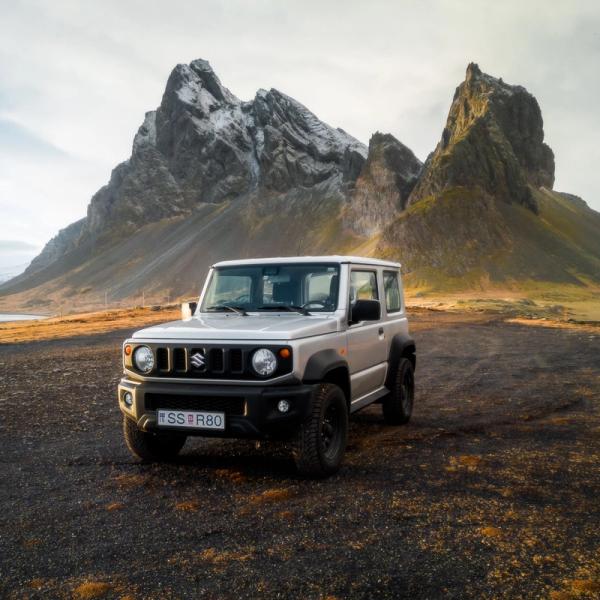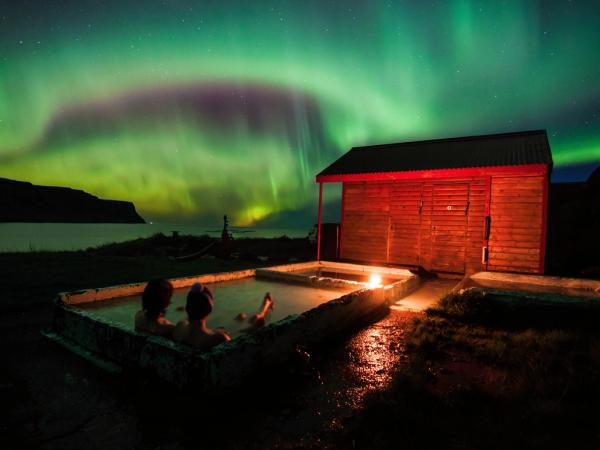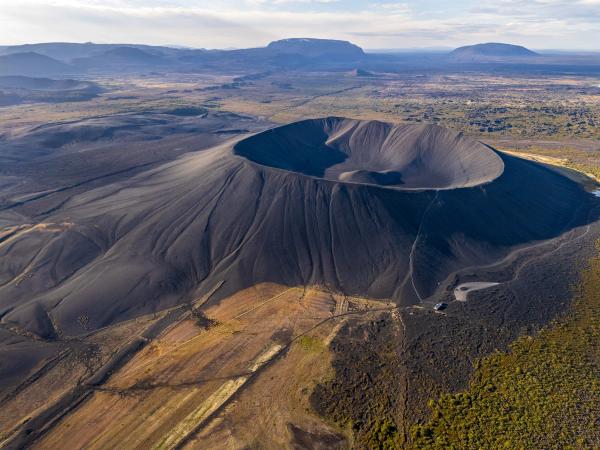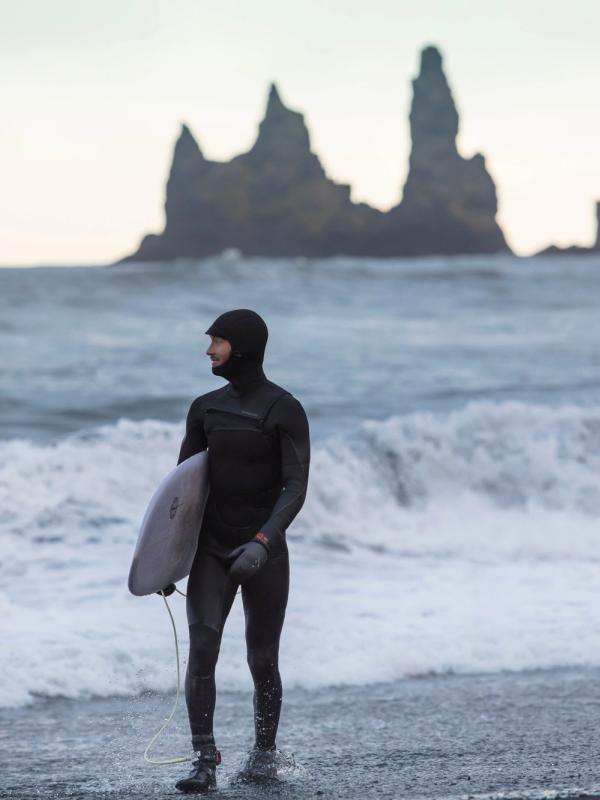
Surfing in Iceland: Complete Guide to Cold-Water Adventure
Yes, you can surf in Iceland, and it's pretty cool. Picture riding waves with volcanoes in the background, sometimes under the Northern Lights or the Midnight Sun. It's different from warm-water spots, which is what makes it stand out.
Iceland has strong North Atlantic waves, empty lineups, and scenery you won't find anywhere else. This guide tells you everything about surfing in this cold but beautiful place, whether you've surfed cold water before or just want to try something new.
Key takeaways
- Surfing in Iceland is totally possible and offers uncrowded waves with epic scenery, including volcanoes, black-sand beaches, and even the Northern Lights.
- Winter has the best waves for experienced surfers, while summer is calmer and better for beginners, thanks to the mild weather and the long daylight hours.
- Most surf spots are on the Reykjanes Peninsula near Reykjavík, but remote regions in the north, west, and east offer wild, empty breaks for those willing to explore.
- Cold-water surfing here is serious: proper wetsuits, safety planning, and respect for local conditions are essential.
Why Surf in Iceland?
Iceland gives you a surf experience unlike any other place. You're not just catching waves, you're surfing next to volcanoes, black sand beaches, and sometimes glaciers in the distance.
One main draw is the lack of crowds. While popular surf spots often mean fighting for waves, Iceland's breaks are mostly empty. Many days, you might have the whole spot to yourself or share it with just a few other surfers.
Depending on when you visit, you might see something truly special. Winter sessions could happen under the Northern Lights, while summer lets you surf at midnight in full daylight.
The local surf community is small but friendly. Icelandic surfers respect the ocean and often share tips with visitors who show the same respect.
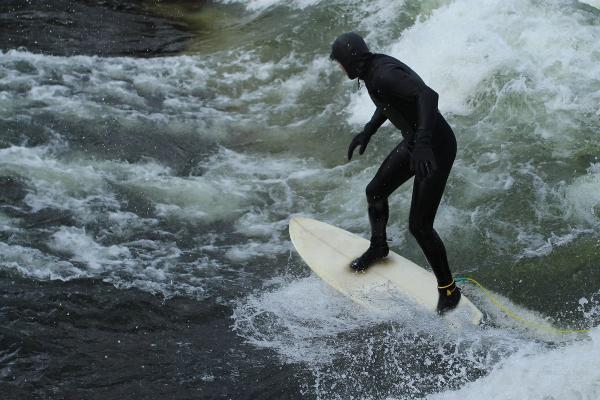
When to Surf in Iceland
The best time for your trip depends on your skill level and what kind of experience you want.
Winter (October to March)
This is the best time for skilled surfers. The North Atlantic sends strong, regular waves, creating the best conditions of the year. The downsides are very cold water (2-4°C), short daylight (4-6 hours), and harsh weather, including snow and strong winds.
Winter is for skilled surfers only. February often has the biggest, cleanest waves.
Spring (March to May)
A good middle ground, with decent waves still coming in and gradually better weather. Daylight hours increase, and it gets a bit warmer. Water stays cold (3-7°C), but conditions are easier to handle than in deep winter.
Summer (June to August)
Summer brings milder weather with warmer air (10-15°C) and slightly warmer water (8-11°C). Waves are smaller and less frequent, but the endless daylight means you can surf any time, even at midnight under the sun. This is best for beginners or those who want more comfort and less intense waves.
Fall (September to November)
As Atlantic storms return, fall brings back regular waves while still offering decent temperatures and daylight hours. Many think this is the best time for both wave quality and comfort, especially in September and early October, before the harsh winter weather arrives.
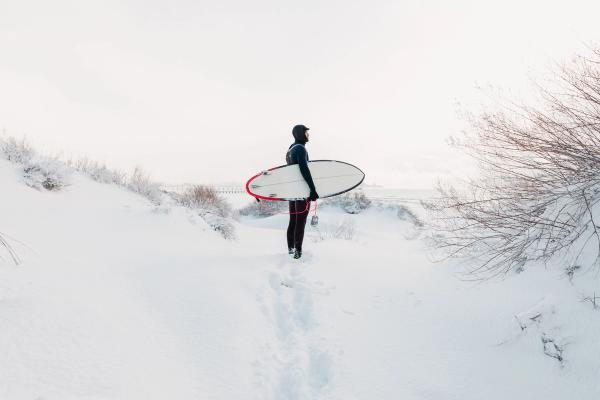
Best Surf Spots in Iceland
Iceland's coastline is over 5,000 kilometers long, but most good surf spots are along the southwestern Reykjanes Peninsula.
Reykjanes Peninsula (Most Accessible)
The Reykjanes Peninsula is the heart of Iceland's surf scene, with good waves, easy access, and volcanic landscapes. This area gets waves from many directions and has various breaks within short driving distance, so surfers can find good conditions no matter the wind and wave patterns. Most spots are within an hour of Reykjavík, so you can stay in the city and drive to different spots each day.
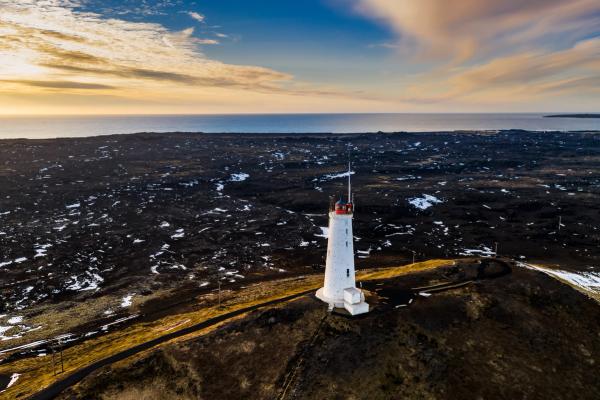
Þorlákshöfn (Thorli)
The best wave in Iceland, Thorli, is a right-hand point break that gives long, clean rides up to 300 meters. It works best with northwest waves and handles big swells well. The wave breaks in a curved bay, making good walls for intermediate to advanced surfers.
Despite its quality, Thorli is at risk from harbor expansion plans. The local surf community is working to save this special wave.
Sandvík
Good for beginners and intermediate surfers, Sandvík is a black sand beach break with mostly gentle waves. It has long lefts and rights and works year-round, but watch out for strong currents that can pull you out.
Grindavík
A heavy reef/point break for advanced surfers only. Grindavík, near the Blue Lagoon, makes powerful rights and lefts over a rocky, shallow bottom. It takes the full force of North Atlantic swells, creating tough but rewarding waves for skilled surfers.
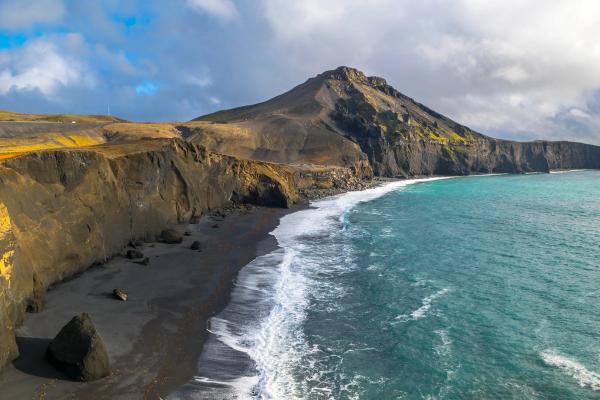
Hafnir
This harbor break works for all levels, depending on conditions. In summer, it has easy waves for beginners, but winter brings huge waves that are only suitable for experienced surfers. Wave quality is at its best when the tide is coming in.
Grótta
A local Reykjavík spot, this reef break is on the Seltjarnarnes peninsula, just minutes from downtown. It works with westerly swells and offshore winds but doesn't break often. When conditions are right (usually with northwest swells and light wind), it offers fun, fast waves close to the city.
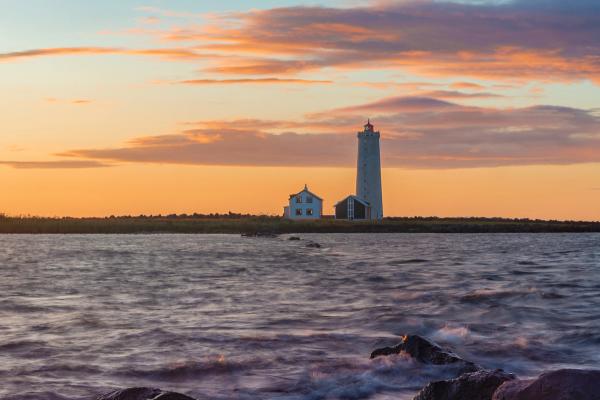
Beyond the Southwest (Remote Surf)
If you’re willing to travel farther, Iceland's northern, eastern, and western coastlines have untapped spots and clean waves. These remote areas see few surfers, offering quiet places for those ready to deal with hard access, limited facilities, and even tougher conditions. The reward is surfing in truly wild settings, from steep fjords to beaches where you’ll surf seeing massive glaciers.
Eyvík (North Iceland)
Near Akureyri in North Iceland, Eyvík is a steady beach break that works year-round. It offers fairly clean, intermediate-level waves (up to about 3 meters on big swells) and isn't as scary as Grindavík but has more power than Sandvík.
Breiðavík (Westfjords)
A wild, curved bay in Iceland's remote Westfjords that has heavy beach-break waves up to 3 meters. The beach faces west and rarely has no waves, making it good for brave surfers. The wild setting makes it even better, but prepare for a long journey to reach this out-of-the-way spot.
Stokksnes (East Iceland)
A pretty beach in the east coast near the striking Vestrahorn Mountain. The partly sheltered shape of the bay can hold 1-2 meter waves in summer. It's best surfed at high tide during the summer months, with the stunning backdrop of ice-capped peaks.
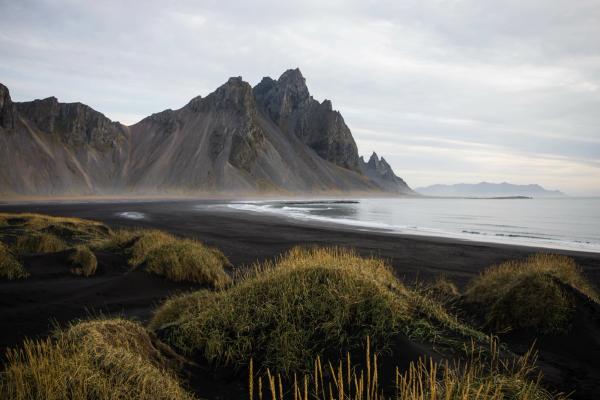
Essential Gear for Cold-Water Surfing
Surfing in Iceland requires serious cold-water gear, so don’t skimp on the gear.
The Cold-Water Essentials
- Wetsuit: A 5/4mm or 6/5mm wetsuit with sealed seams is the bare minimum. In winter, many use 6/5/4mm "steamer" suits or even double-layer wetsuits. Look for suits with built-in hoods for the most warmth.
- Boots: Thick neoprene boots (5-7mm) with glued seams are must-haves. Your feet will feel cold first, so get good boots.
- Gloves: 3-5mm neoprene gloves to keep your hands working while staying warm. In deep winter, you may also need thicker mitts.
- Hood: If your suit doesn't have a built-in hood, a separate 3-5mm neoprene hood is key to stopping heat loss from your head.
Additional Gear for Comfort
- Thermal Base Layers: Many surfers wear thin thermal layers under their wetsuits for extra warmth.
- Changing Robe: A waterproof, insulated changing robe makes getting in and out of your wetsuit much easier in cold, windy weather.
- Hand Warmers: Throw-away or rechargeable hand warmers can help warm you up between sessions.
- Thermos: Bring hot drinks to warm up from the inside after surfing.
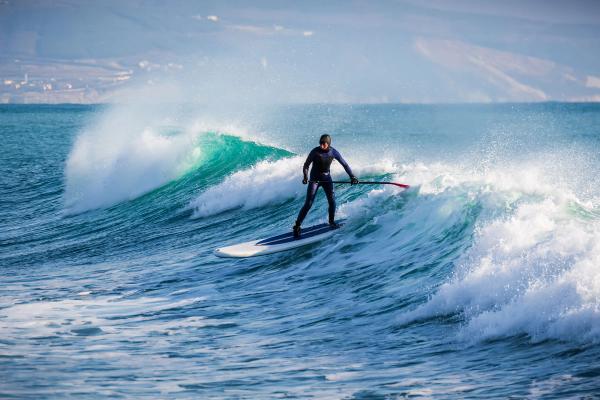
Where to Rent Gear in Iceland
Bringing your own gear is best, but if you can't, several places rent equipment:
- Arctic Surfers (Reykjavík): The main surf tour operator has good wetsuit and board rentals.
- Adventure Vikings (Þorlákshöfn): Provides full gear with their lessons and tours, including 6/5/4mm suits.
Gear can be hard to find, especially during busy times, so book ahead or bring your own if possible.
Safety in Iceland's Waters
As I mentioned earlier, surfing in Iceland is unique, and that includes the safety considerations and the potential situations you might find yourself in.
Cold-Water Dangers
Hypothermia is the main risk. Even with proper gear, keep sessions to 1-2 hours in winter. Know the signs of hypothermia: shivering, confusion, and poor coordination. Exit the water right away if you experience these symptoms.
Have warm clothes, hot drinks, and, if possible, access to a heated car or building after your session. Some surfers go to nearby hot springs after surfing to warm up. If you ask me, that’s always a good idea.
Ocean Conditions
Iceland's waters create a mix of challenges that can surprise even experienced surfers. The North Atlantic's strong swells, combined with the island's big tides and volcanic underwater terrain, create conditions that need both respect and knowledge. Understanding these factors is key before paddling out at any Icelandic break.
- Powerful Currents: Many Icelandic breaks have strong rips and currents. Study the break before paddling out and know what to do if caught in a rip.
- Tides: Tides can change by over 5 meters, greatly changing how breaks work. Always check tide charts and ask locals about when each spot works best.
- Rocky Bottoms: Most Icelandic waves break over volcanic reefs or rocky bottoms. Be aware of the hazards that await underwater, especially at low tide.
The Golden Rules
These aren't just tips; they're life-saving rules that every surfer in Iceland should follow. The remote nature of many surf spots, combined with extreme weather and water conditions, means a small mistake can quickly become dangerous. Follow these rules to stay safe.
- Never Surf Alone: Always use the buddy system in these challenging conditions.
- Tell Someone Your Plan: Let a non-surfing friend know where you're surfing and when you expect to return.
- Check Forecasts Twice: Review both weather and ocean forecasts. The Icelandic Meteorological Office (Vedur.is) is the best place to check forecasts.
- Respect Local Knowledge: If locals warn about dangerous conditions or advise against jumping into the water, listen to them.
- Be Prepared for Emergencies: Know the emergency number (112) and understand that help may take time to reach remote areas.
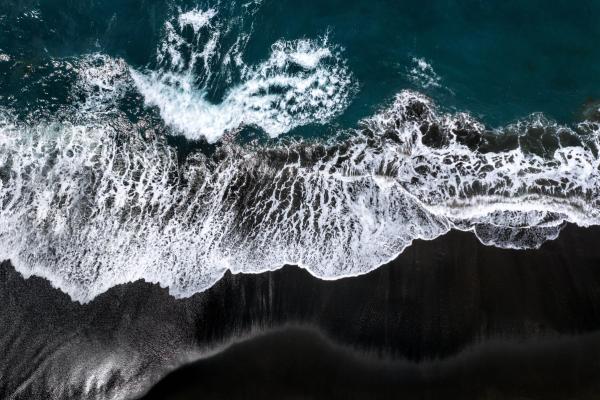
Surf Culture in Iceland
Iceland's surf scene is small but passionate, with a fascinating history and unique character.
History and Growth
Surfing arrived in Iceland in the early 1990s, reportedly first brought by American soldiers. What started with just a few dedicated locals has grown steadily. The Icelandic Surfing Association (Brimbrettafélag Íslands) has grown from just 3 members twenty years ago to around 600 active surfers today.
The Local Community
The close-knit nature of Iceland's surf community creates a strong sense of fellowship. Many local surfers also snowboard or ski, so they’re more like die-hard adventurers.
Local surfers generally welcome visitors who respect the ocean and the local spots, so don’t be afraid to ask for tips or information about conditions and safety. They know better than anyone else that surfing in Iceland requires mutual support.
Environmental Awareness
The surf community is actively involved in conservation efforts. When development threatened Þorlákshöfn's wave, the Icelandic Surfing Association worked on harbor designs to protect this valuable resource. This environmental focus is typical of the community, which, of course, is fond of Iceland's natural environment.
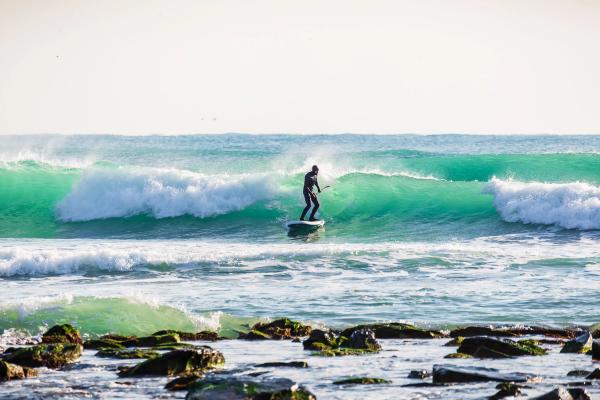
Planning Your Surf Trip
Unlike in destinations with warm water, where you can simply show up with board shorts and a surfboard, an Iceland surf adventure needs careful planning. From timing your visit and choosing the right spot to making sure you have the right gear and transportation, good planning makes all the difference. This section covers the key details for a successful Iceland surf trip.
Getting Around
A rental car is essential for getting to surf spots. 4x4 vehicles are strongly recommended in winter. Most main spots are within an hour's drive of Reykjavík, but roads can be bad during the winter months.
Surf Schools and Tours
For those new to cold-water surfing or Iceland in general, guided tours are a good idea, as they provide valuable local knowledge, gear, and safety:
- Arctic Surfers: Founded by the local pioneer Ingó Olsen, they offer complete tour packages from Reykjavík.
- Adventure Vikings: Runs a surf school at Þorlákshöfn with beginner-friendly lessons and equipment provided.
These tours typically include transportation, gear, and lessons, making them ideal for first-time visitors to Iceland's surf scene.
Where to Stay
While there aren't dedicated surf lodges, several good bases for surf trips include:
- Reykjavík: The capital has the most services and is within driving distance of the Reykjanes spots.
- Þorlákshöfn: Closer to some of the best breaks, including Thorli.
- Grindavík: Near several quality waves and the Blue Lagoon in case you want to go there for a nice recovery session.
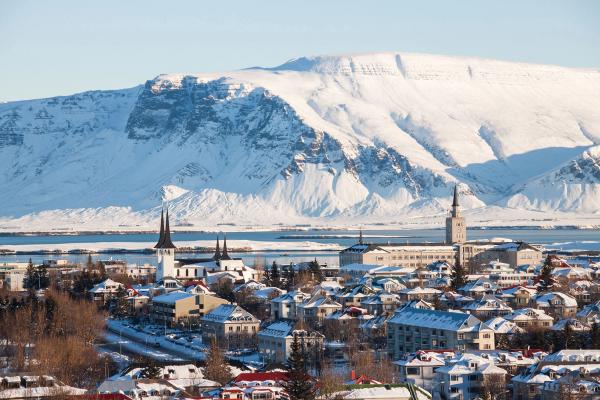
Beyond Surfing
One of Iceland's great advantages is the chance to combine surfing with other unique experiences:
- Geothermal Hot Springs: Perfect for warming up after a cold surf session.
- Northern Lights Viewing: In winter, combine evening surf sessions with aurora watching.
- Glacier Tours: Add some land-based adventure to your surf trip.
- Volcanic Sites: Explore recent eruption areas on the Reykjanes Peninsula between surf sessions.
Conclusion
Surfing in Iceland offers a rare mix of challenging waves, beautiful scenery, and unique natural sights, creating an unforgettable experience. While the cold water and harsh conditions demand respect and planning, the rewards, empty lineups, clean environments, and the possibility of surfing under the Northern Lights or the Midnight Sun make it worth the effort.
Whether you're an experienced cold-water surfer looking for new places or an adventurous person wanting to push your limits, Iceland's waves are waiting. With proper gear, knowledge, and respect for the ocean, you'll discover a surf destination like no other.

